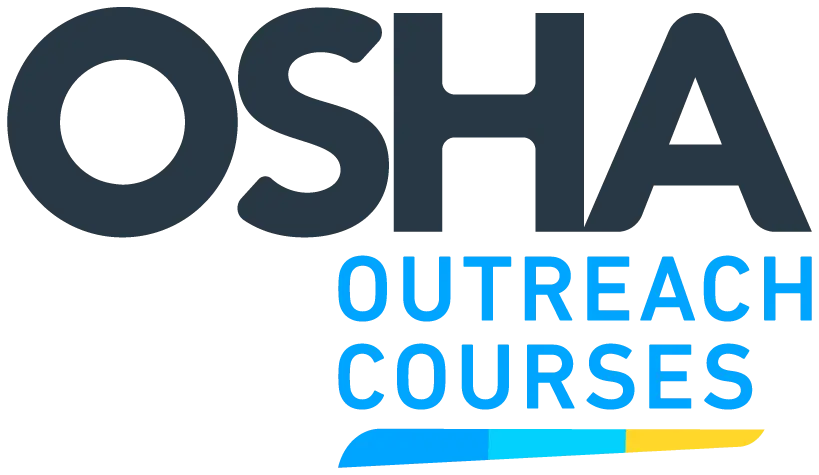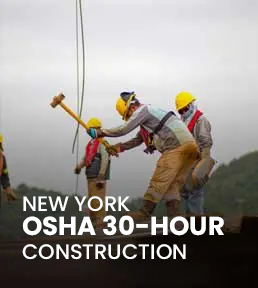Environmental Responsibility Suite
Why Workers Choose Us
| features |  |
other providers |
|---|---|---|
| Instant Downloadable Certificate | ||
Free Study Guide

|
||
Discounts For Businesses

|
||
| No Hidden Cost | ||
Mobile Compatibility

|
||
Flexible Learning

|
Satisfied Customers
Course Outline
Environmental Overview (US)
-
1. Introduction
- Welcome
- Overview
-
2. Policies and Laws
- Environmental Safety and Health Policy
- Responsibilities
- Learning Activity
- Learning Activity (continued)
- Learning Activity (continued)
- Learning Activity (continued)
- Learning Activity (continued)
- Learning Activity (continued)
- Laws
-
3. How Job Performance Affects the Environment
- Everyone Must Do Their Part
- Purchasing, Ordering and Stocking
- Managing Operations
- Handling Facility Wastes
- Equipment Repair or Operation
- Learning Activity
-
4. Improving Environmental Performance
- Air Quality
- Waste Management
- Water Quality
- Knowledge Check: Air Quality
- Knowledge Check: Water Quality
- Knowledge Check: Waste Management
-
5. Conclusion
- Conclusion
Environmental Responsibility Part 1 (US) - Environmental and Waste Management
-
1. Introduction
- Welcome
- Environmental Mission
- Environmental Issues
- Learning Objectives
-
2. Environmental Management System
- Environmental Management System (EMS)
- EMS Adherence
- Knowledge Check: Environmental Management Systems
- EPA-Regulated Areas
-
3. Hazardous Waste
- Hazardous Waste Generation
- Hazardous Waste Categories
- Hazardous Waste Evaluation
- Hazardous Waste Generator Classification
- Learning Activity: Hazardous Waste Generator Classification
- Hazardous Waste Generator Classification (continued)
- Hazardous Waste Accumulation
- Labeling Hazardous Waste
- Knowledge Check: Hazardous Waste
-
4. Non-hazardous Waste
- Non-hazardous Waste
- Non-hazardous Waste (continued)
- Learning Activity: Hazardous and Non-hazardous Waste
-
5. Industrial Wastewater
- Industrial Wastewater Discharges
- Discharges to Surface Waters
- Discharges to a Municipal Treatment Plant
- Knowledge Check: Industrial Wastewater Discharges
-
6. Stormwater
- Stormwater Discharges
- Permitting Requirements
- SWP3
-
7. Permits
- Permits
- Knowledge Check: Permits
- Knowledge Check: Permits (continued)
-
8. Best Management Practices
- Industrial Waste BMPs
- Storage
- Spills, Outdoor Storage and Accumulated Water
- Equipment, Erosion and Stormwater Management
- Knowledge Check: Best Management Practices
- Learning Activity: Industrial Waste BMPs
-
9. Summary
- Summary
Environmental Responsibility Part 2 (US) - Air, Tanks, Oil and Waste
-
1. Introduction
- Welcome
- Environmental Mission and Goals
- EPA-Regulated Areas
- Learning Objectives
-
2. Air Emissions
- Air Emissions
- Air Emission Sources
- Air Emissions BMPs
- Knowledge Check: Air Emissions
-
3. Storage Tanks
- Stationary Storage Tank Management
- Underground Storage Tanks
- UST Registration Requirements
- Learning Activity: Underground Storage Tanks
- Aboveground Storage Tanks
- AST Requirements
- AST Requirements (State)
-
4. SPCC
- Spill Prevention, Control and Countermeasure (SPCC)
- Knowledge Check: SPCC Requirements
- Knowledge Check: SPCC Requirements (continued)
- Knowledge Check: SPCC Requirements (continued)
-
5. Used Oil
- Standards for Managing Used Oil
- Used Oil (State)
- Used Oil Labeling
- Used Oil Filters
- Automotive Fluids
- Knowledge Check: Used Oil Filters
-
6. Universal Waste
- Universal Waste (UW)
- Categories of Universal Wastes
- Learning Activity: Universal Waste
- Managing Universal Wastes
- Universal Waste Classifications
- Packaging and Labeling of Universal Waste
- Universal Waste Accumulation Time
- Knowledge Check: Universal Waste
- Knowledge Check: Universal Waste (continued)
- Knowledge Check: Universal Waste (continued)
-
7. Conclusion
- Conclusion
Environmental Responsibility Part 3 (US) - Storage, Handling and Response
-
1. Introduction
- Welcome
- Environmental Mission and Goals
- Learning Objectives
- OSHA Regulated Areas
-
2. Asbestos
- Asbestos
- Asbestos (continued)
- Knowledge Check: Asbestos
-
3. Spill, Fire and Medical Response
- Spill, Fire and Medical Response
- EAP Elements
- Fire Prevention Plan
- Spill Response
- Spill Response Actions
- Learning Activity: Spill Response Actions
- Fire Response
- Large Fire Response
- Fire Response Actions
- Knowledge Check: Fire Response
-
4. Chemical Storage
- Chemical Storage
- Flammable and Combustible Liquids
- Flammable Liquid Classes
- Combustible Liquid Classes
- Learning Activity: Flammable and Combustible Liquids
- Flammable and Combustible Storage
- Storage Cabinet Requirements
- Safety Can Requirement
- Outdoor Storage Areas
- Potential Local Requirements
- Knowledge Check: Flammable and Combustible Liquid Storage
- Outdoor Chemical Storage
- Outdoor Chemical Storage: Containment
-
5. Chemical Handling
- Chemical Handling
- Chemical Handling Guidelines
- Learning Activity: Chemical Handling
- Handling Compressed Gases
- Handling Freon and Other Refrigerants
- Hand Pump Dispensing From Drums or Totes
- Gravity Feed Dispensing From Drums or Totes
- Knowledge Check: Chemical Handling
-
6. Summary
- Summary
Stormwater Pollution Prevention (US)
-
1. Introduction
- Welcome
- Introduction
- Learning Objectives
-
2. Definition and Regulations
- What Is Stormwater?
- Regulatory Background
- Knowledge Check: Regulations
- Knowledge Check: Regulations (continued)
-
3. Effects
- Why Is Stormwater Pollution an Issue?
- What Are the Main Pollutants?
- What Is the Effect of Stormwater Pollution?
- Effects of Sediment on the Environment
- What Kills Fish?
- Knowledge Check: Pollution Effects
- Knowledge Check: Pollution Effects (continued)
-
4. Causes
- Generators of Stormwater Pollution
- Sources of Stormwater Pollution
- Learning Activity
-
5. Allowable Discharges
- Allowable Discharges
- Biodegradable Substances
- Learning Activity
-
6. BMPs
- Best Management Practices (BMPs)
- BMPs
- More BMPs
- BMPs – Keys for Construction Sites
- Knowledge Check: BMPs
- Knowledge Check: BMPs (continued)
-
7. Responses and Penalties
- What to Do if There Is a Spill...
- Fines and Penalties
- Knowledge Check: Responses
- Knowledge Check: Penalties
-
8. Prevention
- Stormwater Pollution Prevention Plans (SWP3s)
- Stormwater Pollution Prevention Plan Inspections
- Stormwater Pollution Prevention Plan Recordkeeping Requirements
- Stormwater Pollution Prevention Plan Training Requirements
- Knowledge Check: SWP3
- Knowledge Check: SWP3 (continued)
-
9. Conclusion
- Conclusion
Resource Conservation and Recovery Act (RCRA) Part 1 (US)
-
1. Introduction
- Welcome
- A Little Background…
- Learning Objectives
- Knowledge Check: Hazardous Waste 1
- Knowledge Check: Hazardous Waste 2
-
2. Hazardous Waste Determination
- Solid Waste Definition
- Hazardous Waste Determination
- Hazardous Waste Determination: Two Ways
- Hazardous Waste Conditions
- Hazardous Waste Characteristics: Ignitability
- Hazardous Waste Characteristics: Corrosivity
- Hazardous Waste Characteristics: Reactivity
- Hazardous Waste Characteristics: TCLP
- Learning Activity: Hazardous Waste Characteristics
-
3. Sources
- Hazardous Waste Lists
- Hazardous Waste Mixtures
- Hazardous Waste Mixtures (continued)
- Knowledge Check: Hazardous Waste Mixtures
-
4. Waste Generation
- Waste Determination Responsibility
- Categories of Hazardous Waste Generators: Very Small
- Categories of Hazardous Waste Generators: Small
- Categories of Hazardous Waste Generators: Large
- Categories of Hazardous Waste Generators: Acutely Hazardous
- Knowledge Check: Categories of Generators (Large)
- Knowledge Check: Categories of Generators (Small)
-
5. Generator Status
- Determining Your Generator Status
- Determining Your Generator Status: Exemptions
- Determining Your Generator Status: Exemptions (continued)
-
6. Accumulation and Storage
- Managing Hazardous Waste On-Site
- Learning Activity: Managing Hazardous Waste On-Site
- Storing Hazardous Waste On-Site
- Accumulating Hazardous Waste On-Site
- Accumulating Hazardous Waste On-Site (continued)
- Learning Activity: Accumulating Hazardous Waste On-Site
- Accumulating Wastes in Tanks
-
7. Shipping
- Shipping Hazardous Waste Off-Site
- Shipping Hazardous Waste Off-Site: Transporter
- Shipping Hazardous Waste Off-Site: Packaging
- Shipping Hazardous Waste Off-Site: Manifest
- Shipping Hazardous Waste Off-Site: Copies
- Knowledge Check: Shipping Hazardous Waste Off-Site
- Knowledge Check: Shipping Hazardous Waste Off-Site
- Hazardous Waste Manifest
- Who Is Responsible for the Waste?
-
8. Conclusion
- Conclusion
Resource Conservation and Recovery Act (RCRA) Part 2 (US)
-
1. Introduction
- Welcome
- Introduction: Preparing for and Preventing Accidents
- What Would You Do?
- Learning Objectives
-
2. Prepare for and Prevent Accidents
- Preparing for and Preventing Accidents
- Preparing for and Preventing Accidents (continued)
- Knowledge Check: Preparing for and Preventing Accidents
- Knowledge Check: Preparing for and Preventing Accidents (continued)
-
3. Planning for Emergencies
- Contingency Plan
- Emergency Procedures
- Fires and Spills
- National Response Center
- Emergency Phone Numbers
- Emergency Coordinator
- Emergency Coordinator (continued)
- Learning Activity
-
4. Training
- Training
- Training Topics
-
5. Waste Management Strategies
- Good Housekeeping and a Safe Environment
- Recycle, Treat, Reduce
- Minimizing Waste
- Cost Reduction
- Knowledge Check: Good Housekeeping Practices
-
6. Inspections
- Inspections
- Inspections (continued)
- Preparing for an Inspection
-
7. Conclusion
- Conclusion
Group Discount for Corporate Accounts

VIDEO TESTIMONIAL
Join our mailing list
Get announcements, industry updates and promotional offers.
17350 TX-249 Ste 220 19204, Houston, TX 77064, United States







